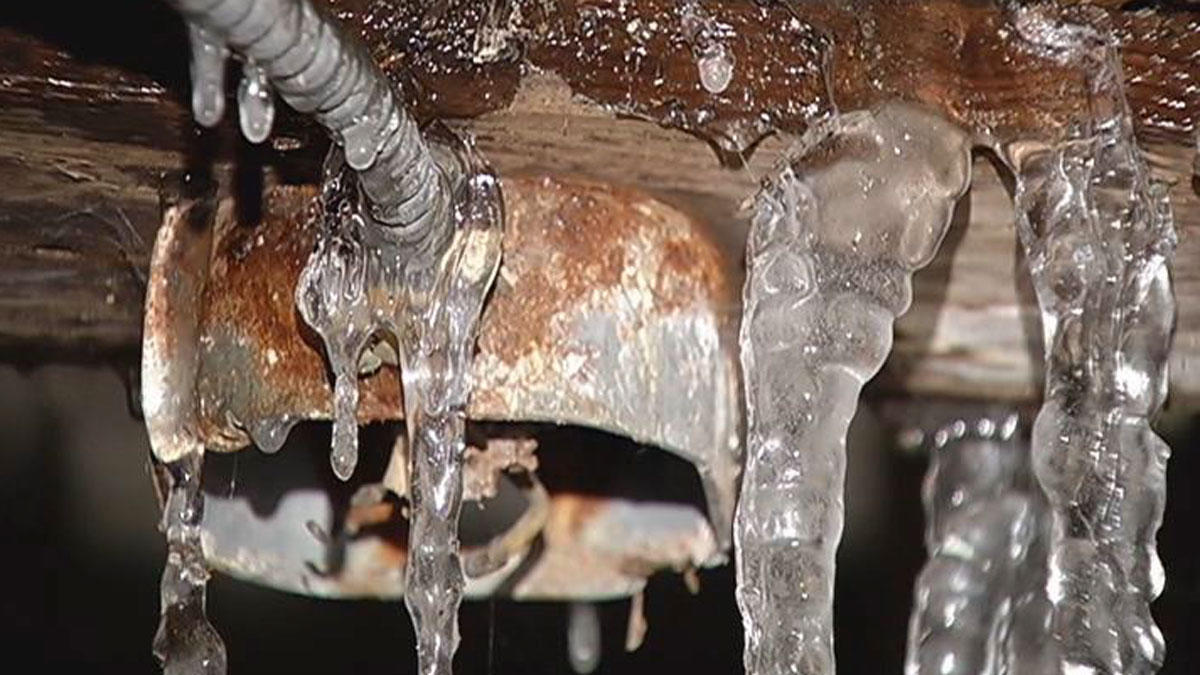How to Protect Plumbing System from Cold Weather: Critical Strategies
How to Protect Plumbing System from Cold Weather: Critical Strategies
Blog Article
The writer is making a number of great observations related to Prevent Frozen Pipes overall in this content on the next paragraphs.

Cold weather can damage your pipes, specifically by freezing pipelines. Below's how to prevent it from happening and what to do if it does.
Intro
As temperature levels decline, the danger of icy pipes increases, potentially leading to pricey fixings and water damages. Understanding just how to prevent frozen pipelines is important for home owners in chilly environments.
Prevention Tips
Protecting susceptible pipes
Wrap pipelines in insulation sleeves or utilize heat tape to protect them from freezing temperature levels. Concentrate on pipes in unheated or external areas of the home.
Home heating strategies
Keep indoor rooms appropriately warmed, especially areas with pipes. Open up closet doors to allow warm air to distribute around pipelines under sinks.
Just how to recognize frozen pipelines
Look for decreased water flow from faucets, unusual odors or noises from pipes, and visible frost on exposed pipes.
Long-Term Solutions
Architectural modifications
Take into consideration rerouting pipelines away from exterior walls or unheated areas. Include additional insulation to attics, basements, and crawl spaces.
Upgrading insulation
Invest in top quality insulation for pipes, attic rooms, and wall surfaces. Appropriate insulation helps keep constant temperatures and reduces the threat of frozen pipelines.
Securing Outside Pipes
Garden tubes and outside faucets
Detach and drain garden hose pipes prior to winter. Install frost-proof spigots or cover outside taps with shielded caps.
Understanding Icy Pipes
What triggers pipelines to freeze?
Pipes ice up when revealed to temperature levels listed below 32 ° F (0 ° C) for extended periods. As water inside the pipelines ices up, it expands, putting pressure on the pipe wall surfaces and possibly creating them to burst.
Threats and problems
Icy pipes can lead to water system disturbances, home damage, and costly repair work. Burst pipes can flooding homes and trigger substantial structural damage.
Signs of Frozen Pipes
Recognizing icy pipes early can prevent them from rupturing.
What to Do If Your Pipes Freeze
Immediate activities to take
If you believe frozen pipes, maintain taps open to relieve stress as the ice melts. Utilize a hairdryer or towels soaked in warm water to thaw pipes gradually.
Conclusion
Protecting against frozen pipelines requires aggressive steps and fast feedbacks. By understanding the reasons, signs, and preventive measures, home owners can safeguard their pipes throughout cold weather.
5 Ways to Prevent Frozen Pipes
Drain Outdoor Faucets and Disconnect Hoses
First, close the shut-off valve that controls the flow of water in the pipe to your outdoor faucet. Then, head outside to disconnect and drain your hose and open the outdoor faucet to allow the water to completely drain out of the line. Turn off the faucet when done. Finally, head back to the shut-off valve and drain the remaining water inside the pipe into a bucket or container. Additionally, if you have a home irrigation system, you should consider hiring an expert to clear the system of water each year.
Insulate Pipes
One of the best and most cost-effective methods for preventing frozen water pipes is to wrap your pipes with insulation. This is especially important for areas in your home that aren’t exposed to heat, such as an attic. We suggest using foam sleeves, which can typically be found at your local hardware store.
Keep Heat Running at 65
Your pipes are located inside your walls, and the temperature there is much colder than the rest of the house. To prevent your pipes from freezing, The Insurance Information Institute suggests that you keep your home heated to at least 65 degrees, even when traveling. You may want to invest in smart devices that can keep an eye on the temperature in your home while you’re away.
Leave Water Dripping
Moving water — even a small trickle — can prevent ice from forming inside your pipes. When freezing temps are imminent, start a drip of water from all faucets that serve exposed pipes. Leaving a few faucets running will also help relieve pressure inside the pipes and help prevent a rupture if the water inside freezes.
Open Cupboard Doors
Warm your kitchen and bathroom pipes by opening cupboards and vanities. You should also leave your interior doors ajar to help warm air circulate evenly throughout your home.

As a devoted reader about How To Avoid Freezing Pipes, I thought sharing that excerpt was worth the trouble. Sharing is caring. One never knows, you might be helping someone out. Thank you for going through it.
Book Your Installation Report this page